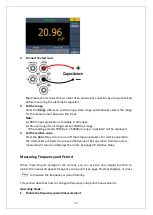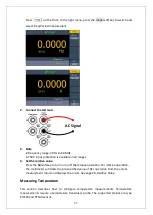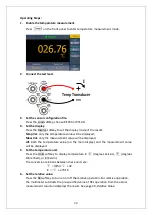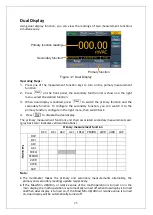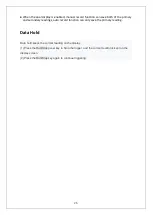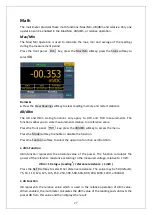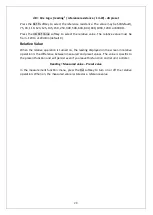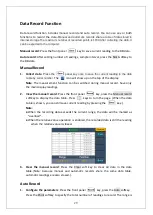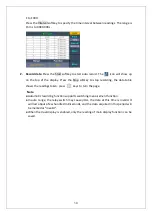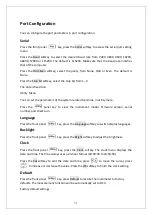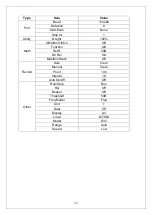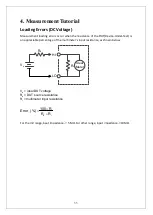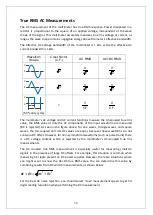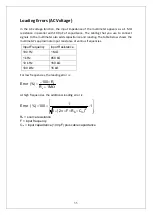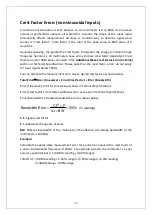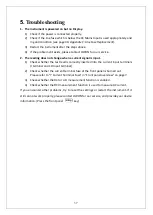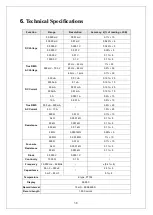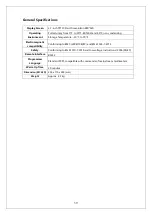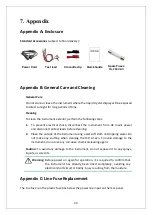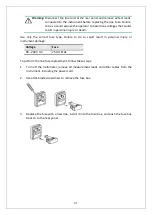
4.Measurement Tutorial
Crest Factor Errors (non-sinusoidal inputs)
A common misconception is that because an AC multimeter is true RMS, its sine wave
accuracy specifications apply to all waveforms. Actually, the shape of the input signal
dramatically affects measurement accuracy. A common way to describe signal wave
shapes is “crest factor”. Crest factor is the ratio of the peak value to RMS value of a
waveform.
Generally speaking, the greater the crest factor, the greater the energy contained in high
frequency harmonics. All multimeters have errors that are crest factor dependent. Crest
factor errors for XDM Series are listed in the
Additional Wave Crest Factor Error (not Sine)
section in Technical Specifications. Please note that the crest factor errors do not apply
for input signals below 100Hz.
You can estimate the measurement error due to signal crest factor as shown below:
Total Error
=
Error (Sine wave) + Error (Crest factor) + Error (Bandwidth)
Error (Sine wave): error for sine wave as shown in Technical Specifications.
Error (Crest factor): crest factor additional error as shown in Technical Specifications.
Error (Bandwidth): estimated bandwidth error as shown below:
2
C.
Ban
F.
dwidth E
F
r
100%
4
or
W
r
B
π
−
×
=
×
×
(% reading)
C.F.
: Signal crest factor
F
: Fundamental frequency of pulse
BW
: Effective bandwidth of the multimeter (The effective AC voltage bandwidth of the
multimeter is 100 kHz)
Example:
Calculate the approximate measurement error for a pulse train input with a crest factor of
2 and a fundamental frequency of 20kHz. For example, assume the multimeter’s 1-year
accuracy specifications is ± (0.08%× r 0.04%×range).
Total Error = (0.08%×r 0.04%×range) + (0.05%×range) + (6.4%×reading)
= 6.48%×r 0.09%×range
36

